#B.K.S Iyengar
Explore tagged Tumblr posts
Text
Do not think of yourself as a small, compressed, suffering thing. Think of yourself as graceful and expanding, no matter how unlikely it may seem at the time.
B.K.S. Iyengar, Light on Life
22 notes
·
View notes
Text
Mindfulness: Técnicas Prácticas para Reducir el Estrés y Mejorar tu Bienestar
🌟 Descubre cómo la práctica del mindfulness puede transformar tu vida y ayudarte a vivir en el presente para un futuro mejor. Aprende de expertos, sigue consejos prácticos y encuentra inspiración en miHenkaku.com
¡Hola, Henkaku! En un mundo lleno de distracciones y estrés, encontrar momentos de paz y claridad puede parecer una tarea imposible. Sin embargo, hay una práctica que ha demostrado ser efectiva para ayudar a las personas a vivir de manera más plena y consciente: el mindfulness. Esta técnica no solo mejora la calidad de vida, sino que también proporciona una base sólida para un futuro más…
#alimentación consciente#B.K.S. Iyengar#bienestar#budismo#celebrities#concentración#desarrollo personal#equanimidad#escaneo corporal#Filosofía oriental#inteligencia emocional#Jon Kabat-Zinn#meditación#meditación diaria#mindfulness#Oprah Winfrey#personajes históricos#reducción del estrés#respiración consciente#Salud mental#satisfacción en la vida#Steve Jobs#taoísmo#Thich Nhat Hanh#Vicente Simón#vivir en el presente#zen
0 notes
Text


“The physical body is not only a temple for our soul, but the means by which we embark on the inward journey toward the core.” — B.K.S. Iyengar
Sun Temple Mac Baconai @Macbaconai
204 notes
·
View notes
Text
Happy International Yoga Day!

Today we celebrate the ancient practice of yoga, which has been a cornerstone of Indian culture for over 5,000 years. We honor the "Father of Modern Yoga," Tirumalai Krishnamacharya (1888-1989), who played a crucial role in popularizing yoga worldwide. We also honor the original "Father of Yoga," Patanjali, who authored the celebrated yoga sutras.
_History of Yoga:_
Yoga has its roots in the Indus Valley Civilization, with evidence of yoga practices dating back to 3000 BCE. The word "yoga" comes from the Sanskrit word "yuj" meaning "to unite." Over time, yoga evolved through various traditions, including Hatha Yoga, Raja Yoga, and Bhakti Yoga.
Patanjali:
Patanjali was a Hindu author, mystic, and philosopher who authored the Yoga Sutras, a categorization of yogic thought arranged in four volumes. He is regarded as an avatar of Adi Sesha and is believed to have lived between the 2nd century BCE and the 5th century CE ¹.
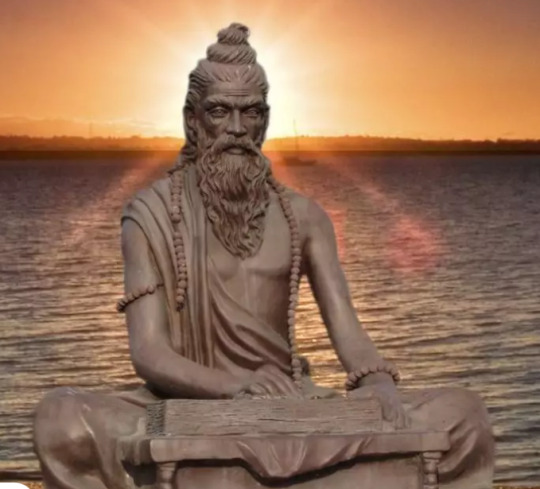
Tirumalai Krishnamacharya:
Born in 1888, Krishnamacharya was a Indian yoga master, ayurvedic healer, and scholar. He studied yoga under his father and later under the revered yoga guru, Rama Mohan Brahmachari. Krishnamacharya went on to teach yoga to prominent students, including B.K.S. Iyengar, K. Pattabhi Jois, and Indra Devi, who spread yoga globally.
BENEFITS OF YOGA
Yoga offers numerous benefits, including:
- Improved flexibility and strength
- Reduced stress and anxiety
- Enhanced mental clarity and focus
- Improved overall well-being
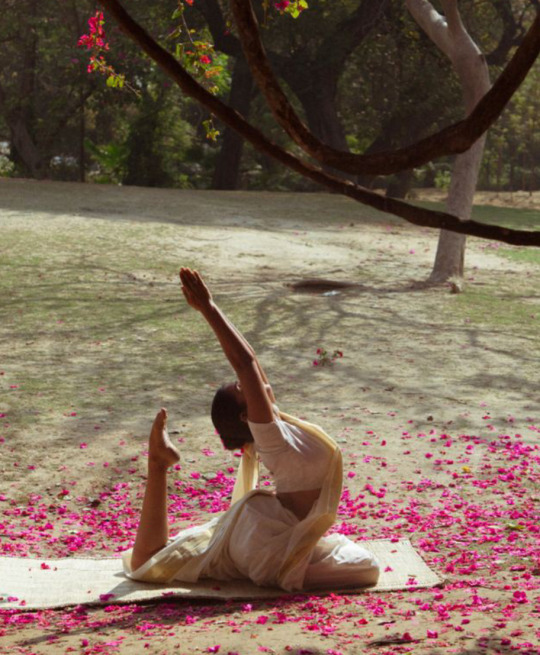
Popular Yoga Asanas:
1. Downward-Facing Dog (Adho Mukha Svanasana)
2. Warrior Pose (Virabhadrasana)
3. Triangle Pose (Trikonasana)
4. Seated Forward Fold (Paschimottanasana)
5. Tree Pose (Vrksasana)
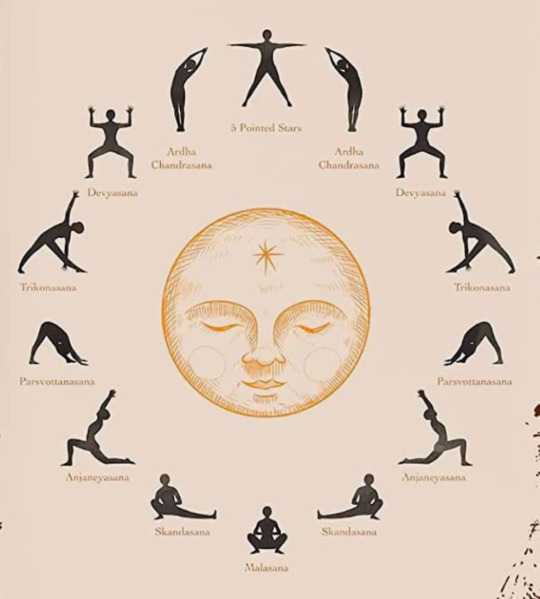
#InternationalYogaDay#YogaForAll#desiblr#desi tumblr#desi girl#being desi#desi tag#desi aesthetic#yoga#indian culture#health and wellness#desi#international yoga day#hinduism#hindublr
45 notes
·
View notes
Text

"Lascia che il ritmo del corpo,.. la melodia della mente,.. e l'armonia dell'anima.. creino la sinfonia della vita.. " ~B.K.S. Iyengar art on Pinterest *************************** "Let the rythmn of the body,.. the melody of the mind,..and the harmony of the soul.. create the symphony of life.. " ~B.K.S. Iyeng art on Pinterest
14 notes
·
View notes
Text

Exploring the Diverse World of Yoga: A Guide to Different Types
Yoga, a practice that originated in ancient India, has evolved into a variety of styles and disciplines, each offering unique benefits. Whether you're seeking physical fitness, mental clarity, or spiritual growth, there's a type of yoga that can meet your needs. Here's a comprehensive guide to some of the most popular forms of yoga practiced today.
1. Hatha Yoga
Hatha Yoga is one of the most widely practiced forms of yoga in the Western world. It encompasses a broad category of physical postures (asanas) and breathing techniques (pranayama). Hatha is typically slower-paced and focuses on alignment and breathing.
Benefits: Improves flexibility, builds strength, enhances balance, reduces stress.
Best For: Beginners looking to learn the basics of yoga.
2. Vinyasa Yoga
Vinyasa, often referred to as "flow" yoga, involves a sequence of poses that flow smoothly into one another, synchronized with the breath. This dynamic and fluid form of yoga is known for its creative sequencing and variety.
Benefits: Enhances cardiovascular health, improves flexibility and strength, boosts mental focus.
Best For: Those who enjoy a more vigorous and fast-paced workout.
3. Ashtanga Yoga
Ashtanga Yoga is a rigorous style of yoga that follows a specific sequence of postures and is practiced in a continuous, flowing manner. It involves synchronizing breath with a progressive series of postures to produce intense internal heat and purify the body.
Benefits: Increases strength and stamina, enhances flexibility, promotes discipline and mental clarity.
Best For: Experienced practitioners seeking a challenging and structured practice.
4. Iyengar Yoga
Founded by B.K.S. Iyengar, this form of yoga emphasizes precise alignment and detailed instructions. Iyengar Yoga often uses props such as blocks, straps, and chairs to help students achieve perfect alignment and deeper stretches.
Benefits: Improves posture, enhances structural alignment, increases strength and flexibility.
Best For: Individuals recovering from injuries or those who prefer a meticulous approach to their practice.
5. Bikram Yoga
Bikram Yoga, also known as hot yoga, consists of a fixed sequence of 26 postures practiced in a room heated to around 105°F (40°C) with 40% humidity. This intense environment aims to replicate the heat of India and promotes detoxification through sweating.
Benefits: Enhances flexibility, promotes detoxification, aids in weight loss, improves cardiovascular fitness.
Best For: Those who enjoy heat and intense physical challenges.
6. Kundalini Yoga
Kundalini Yoga focuses on awakening the kundalini energy, which is believed to be coiled at the base of the spine. This style combines postures, breath control, chanting, and meditation to unlock this energy and achieve spiritual enlightenment.
Benefits: Enhances spiritual growth, boosts mental clarity, increases energy levels, reduces stress.
Best For: Individuals interested in the spiritual and meditative aspects of yoga.
7. Yin Yoga
Yin Yoga is a slow-paced style where poses are held for extended periods, typically three to five minutes or longer. It targets the deep connective tissues and fascia, promoting flexibility and joint health.
Benefits: Improves flexibility and circulation, reduces stress, balances the body's energy systems.
Best For: Those looking for a deeply relaxing and meditative practice.
8. Restorative Yoga
Restorative Yoga involves a few gentle poses, supported by props that are held for extended periods. This practice is designed to activate the parasympathetic nervous system, promoting deep relaxation and healing.
Benefits: Reduces stress, enhances relaxation, aids in recovery from illness or injury.
Best For: Individuals seeking a gentle and therapeutic approach to yoga.
9. Power Yoga
Power Yoga is a vigorous, fitness-based approach to Vinyasa yoga. It emphasizes strength and flexibility and is often used as a cardio workout.
Benefits: Builds muscle strength, enhances cardiovascular health, improves flexibility and balance.
Best For: Those looking for a physically intense workout.
10. Jivamukti Yoga
Jivamukti Yoga combines vigorous Vinyasa-style sequences with spiritual teachings, meditation, and chanting. It places a strong emphasis on ethical and environmental considerations.
Benefits: Enhances physical fitness, promotes spiritual growth, fosters a sense of community.
Best For: Practitioners interested in integrating physical, spiritual, and ethical aspects of yoga.
Conclusion
With such a diverse array of yoga styles available, there's something to suit every individual's needs and preferences. Whether you're looking for a physically demanding workout, a gentle stretch, or a spiritual journey, exploring different types of yoga can help you find the perfect fit for your practice. Start with one that resonates with you, and don't hesitate to try others as your practice evolves.
Namaste!
16 notes
·
View notes
Text
The Breath of Life: A Book Review of Light on Pranayama: The Definitive Guide to the Art of Breathing
Original Article Published on My Book Recommendation website: https://majumdarbookreviews.asia and then published at https://majumdarbookreviews.blog
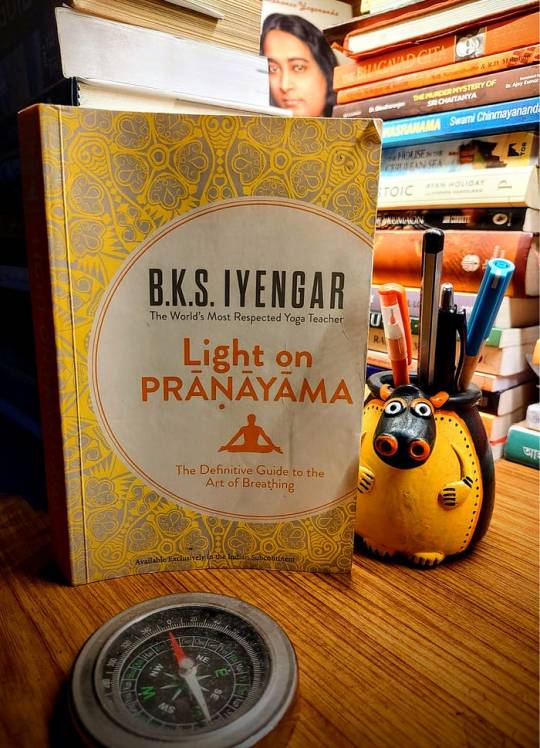
Photograph of the Book, ‘Light on Pranayama’, written by B.K.S. Iyengar
In the ancient cultures of our world, the art of maintaining physical health has always been revered. The philosophy of India profound in its understanding of life, declares that while the body may return to dust, life is sustained by the forces of air, transformed through the element of fire into energy, light and radiance.
This transformation of matter into finer forms is the very source of our strength. Yet, true strength lies not merely in the transmutation of matter but in the complete cycle where air and light are taken in, transformed and returned to the universe.
Yoga, as taught by the seers of India transcends mere physical postures. It is a scientific and systematic discipline for the harmonious alignment of all the energies within the human being leading one towards communion with the Divine. In its various forms – Hatha Yoga, Raja Yoga, Jnana Yoga, Kundalini Yoga, Mantra Yoga, Laya Yoga – yoga remains a pathway to the ultimate reality.
Among these, Pranayama, the control and mastery of the life force is central to the yogic discipline.
In this remarkable book, the author brings to light the profound significance of Pranayama. Sri Aurobindo, the great sage of Pondicherry shared from his own experience how Pranayama amplified his mental faculties, enabling him to compose and retain vast amounts of poetry – an astonishing feat of mental clarity and focus. Such is the power that resides within the breath or prana.
Prana, in the yogic tradition is far more than mere air or breath. It is the essence of life itself, pervading both the animate and inanimate. It flows through us as the vital currents – prana, apana, vyana, udana and samana – governing the energies of our body and mind. Pranayama is thus a sacred practice not just a technique but a way of aligning ourselves with the cosmic life force.
The ancient texts starting with Patanjali treat Pranayama as an indispensable part of the spiritual journey. In today’s fast-paced world where life is fraught with stress, anxiety and illness, many have turned to fleeting and harmful distractions like smoking and intoxicants in search of relief. Yet, as this book reveals, Pranayama holds the key to lasting peace and health. It begins by easing minor ailments such as colds, headaches and mental unrest and gradually leads the practitioner to a state of balance and harmony. However, it is not something to be grasped through mere intellectual discourse. It must be practiced with patience, care and devotion.
The author wonderfully expounds upon the true meaning of yoga. Derived from the Sanskrit root “yuj,” yoga means to bind, to join, to unite. It is the union of the soul with the divine, the alignment of the scattered forces of the mind into a state of reflection and clarity. The eight limbs of yoga – Yama, Niyama, Asana, Pranayama, Pratyahara, Dharana, Dhyana and Samadhi – are the steps on this sacred journey and each is explained in great detail within this work.
The section on breath, its nature and how few truly understand the art of breathing is especially illuminating. Some times I feel like asking myself a simple yet profound question: “Do I know how to breathe?”
The author further points out that poor posture, emotional imbalances and neglect of our respiratory muscles all contribute to improper breathing, which in turn diminishes our vitality.
The author also delves into the intricate systems of nadis and chakras, which govern the flow of prana within the body. Of the 350,000 nadis mentioned in the Siva Samhita, fourteen are considered significant, with the three most vital being Sushumna, Ida and Pingala.
B.K.S. Iyengar, the author of this work, is widely regarded as one of the foremost teachers of yoga in the world, bringing this ancient knowledge to the West. His teachings have been transformative for countless practitioners and his insights into Pranayama are invaluable.
The book ‘Light on Pranayama’ is a treasure trove of wisdom, offering profound insights into the ancient art of breathing and life force control. It has deepened my understanding of Pranayama and how to practice it correctly. I would give it a rating of nine out of ten for its clarity, depth and the invaluable lessons it imparts.
These reflections are but my own humble interpretation and I welcome inputs and suggestions from readers. I thank you for your time and consideration of these thoughts and I deeply respect any differing perspectives that may arise.
You may also visit my Book Review and Book Recommendation website: https://majumdarbookreviews.asia
Thanks and regards,
Mainak Majumdar, Book Critic
Email: [email protected] & [email protected]
#books & libraries#books and coffee#books and literature#books and reading#bookshelf#books#booksbooksbooks#bookstagram#bookstore#children's books#writers on tumblr#writers and poets#writerscommunity#creative writing#writing community#writer stuff
2 notes
·
View notes
Text
Los Orígenes del Yoga: Un Viaje Espiritual a Través del Tiempo
Por Yoga Muladhara, Gimnasio de Yoga
El yoga es una práctica milenaria que ha ganado popularidad en todo el mundo por sus beneficios físicos, mentales y espirituales. Aunque muchos conocen el yoga como una serie de posturas y ejercicios de respiración, sus orígenes son profundamente espirituales y filosóficos, enraizados en la antigua tradición india. En este artículo, exploraremos los orígenes del yoga, su evolución a lo largo del tiempo y su impacto duradero en la cultura y la espiritualidad global.
Los Primeros Vestigios del Yoga
Orígenes Prehistóricos
El yoga se remonta a la prehistoria, con evidencias de su práctica encontradas en la civilización del Valle del Indo, alrededor del 3000 a.C. Se han descubierto sellos y figuras que representan posturas de meditación y yoga en sitios arqueológicos como Mohenjo-Daro y Harappa.
La Era Védica
La primera referencia textual al yoga se encuentra en los Vedas, los textos sagrados más antiguos de la India, que datan de alrededor del 1500 a.C. En los Vedas, el yoga se menciona en el contexto de la meditación y el ritual, como un medio para alcanzar la unión con lo divino. Sin embargo, es en los Upanishads, una serie de textos filosóficos que surgieron más tarde, donde el yoga comienza a adquirir una forma más estructurada y filosófica. Los Upanishads exploran conceptos fundamentales del yoga, como la naturaleza del ser (atman), la realidad última (brahman) y la conexión entre ambos.
El Surgimiento del Yoga Clásico
Los Yoga Sutras de Patanjali
El desarrollo más significativo en la historia del yoga se produjo con los “Yoga Sutras” de Patanjali, escritos alrededor del siglo II a.C. Patanjali sistematizó el conocimiento yóguico existente en 196 sutras o aforismos, creando una guía comprensiva para la práctica del yoga. Los “Yoga Sutras” presentan el Ashtanga Yoga o el “Yoga de los Ocho Pasos”, que incluye:
Yamas (restricciones éticas)
Niyamas (observancias personales)
Asanas (posturas)
Pranayama (control de la respiración)
Pratyahara (retirada de los sentidos)
Dharana (concentración)
Dhyana (meditación)
Samadhi (absorción completa)
Bhagavad Gita
Otro texto crucial en la historia del yoga es el “Bhagavad Gita”, escrito entre el siglo V y II a.C. Este diálogo entre el príncipe Arjuna y el dios Krishna, presente en el épico “Mahabharata”, ofrece una visión del yoga como un camino de acción (Karma Yoga), devoción (Bhakti Yoga) y conocimiento (Jnana Yoga). La “Bhagavad Gita” destaca la importancia del desapego y la dedicación al deber como formas de alcanzar la liberación espiritual.
La Evolución del Yoga
Yoga en la Edad Media
Durante la Edad Media, el yoga continuó evolucionando con la aparición de nuevas escuelas y tradiciones. El Hatha Yoga, que se centra en la práctica de asanas y pranayama, comenzó a desarrollarse alrededor del siglo XI. Textos como el “Hatha Yoga Pradipika” y el “Gheranda Samhita” proporcionaron instrucciones detalladas sobre las posturas y técnicas de respiración, preparando el terreno para las formas modernas del yoga que conocemos hoy.
La Era Moderna
El yoga moderno comenzó a tomar forma en el siglo XIX y principios del XX, con figuras clave como Swami Vivekananda, quien introdujo el yoga en Occidente a través de sus discursos en el Parlamento Mundial de las Religiones en Chicago en 1893. Otros maestros, como Tirumalai Krishnamacharya, B.K.S. Iyengar y Pattabhi Jois, desarrollaron y popularizaron diversas formas de yoga que se han difundido globalmente.
Yoga en el Siglo XXI
Hoy en día, el yoga es una práctica global que abarca una variedad de estilos y enfoques, desde el Hatha Yoga tradicional hasta formas más modernas como el Vinyasa y el Bikram Yoga. A pesar de sus diversas manifestaciones, el yoga sigue siendo un camino hacia el bienestar integral, ofreciendo herramientas para la paz mental, la salud física y la conexión espiritual.
Los Orígenes del Yoga: Un Viaje Espiritual a Través del Tiempo
Por Yoga Muladhara, Gimnasio de Yoga
El yoga es una práctica milenaria que ha ganado popularidad en todo el mundo por sus beneficios físicos, mentales y espirituales. Aunque muchos conocen el yoga como una serie de posturas y ejercicios de respiración, sus orígenes son profundamente espirituales y filosóficos, enraizados en la antigua tradición india. En este artículo, exploraremos los orígenes del yoga, su evolución a lo largo del tiempo y su impacto duradero en la cultura y la espiritualidad global.
Los Primeros Vestigios del Yoga
Orígenes Prehistóricos
El yoga se remonta a la prehistoria, con evidencias de su práctica encontradas en la civilización del Valle del Indo, alrededor del 3000 a.C. Se han descubierto sellos y figuras que representan posturas de meditación y yoga en sitios arqueológicos como Mohenjo-Daro y Harappa, lo que sugiere que las prácticas yóguicas eran conocidas y posiblemente ampliamente practicadas en esa época.
La Era Védica
La primera referencia textual al yoga se encuentra en los Vedas, los textos sagrados más antiguos de la India, que datan de alrededor del 1500 a.C. En los Vedas, el yoga se menciona en el contexto de la meditación y el ritual, como un medio para alcanzar la unión con lo divino. Sin embargo, es en los Upanishads, una serie de textos filosóficos que surgieron más tarde, donde el yoga comienza a adquirir una forma más estructurada y filosófica. Los Upanishads exploran conceptos fundamentales del yoga, como la naturaleza del ser (atman), la realidad última (brahman) y la conexión entre ambos.
El Surgimiento del Yoga Clásico
Los Yoga Sutras de Patanjali
El desarrollo más significativo en la historia del yoga se produjo con los “Yoga Sutras” de Patanjali, escritos alrededor del siglo II a.C. Patanjali sistematizó el conocimiento yóguico existente en 196 sutras o aforismos, creando una guía comprensiva para la práctica del yoga. Los “Yoga Sutras” presentan el Ashtanga Yoga o el “Yoga de los Ocho Pasos”, que incluye:
Yamas (restricciones éticas)
Niyamas (observancias personales)
Asanas (posturas)
Pranayama (control de la respiración)
Pratyahara (retirada de los sentidos)
Dharana (concentración)
Dhyana (meditación)
Samadhi (absorción completa)
Bhagavad Gita
Otro texto crucial en la historia del yoga es el “Bhagavad Gita”, escrito entre el siglo V y II a.C. Este diálogo entre el príncipe Arjuna y el dios Krishna, presente en el épico “Mahabharata”, ofrece una visión del yoga como un camino de acción (Karma Yoga), devoción (Bhakti Yoga) y conocimiento (Jnana Yoga). La “Bhagavad Gita” destaca la importancia del desapego y la dedicación al deber como formas de alcanzar la liberación espiritual.
La Evolución del Yoga
Yoga en la Edad Media
Durante la Edad Media, el yoga continuó evolucionando con la aparición de nuevas escuelas y tradiciones. El Hatha Yoga, que se centra en la práctica de asanas y pranayama, comenzó a desarrollarse alrededor del siglo XI. Textos como el “Hatha Yoga Pradipika” y el “Gheranda Samhita” proporcionaron instrucciones detalladas sobre las posturas y técnicas de respiración, preparando el terreno para las formas modernas del yoga que conocemos hoy.
La Era Moderna
El yoga moderno comenzó a tomar forma en el siglo XIX y principios del XX, con figuras clave como Swami Vivekananda, quien introdujo el yoga en Occidente a través de sus discursos en el Parlamento Mundial de las Religiones en Chicago en 1893. Otros maestros, como Tirumalai Krishnamacharya, B.K.S. Iyengar y Pattabhi Jois, desarrollaron y popularizaron diversas formas de yoga que se han difundido globalmente.
Yoga en el Siglo XXI
Hoy en día, el yoga es una práctica global que abarca una variedad de estilos y enfoques, desde el Hatha Yoga tradicional hasta formas más modernas como el Vinyasa y el Bikram Yoga. A pesar de sus diversas manifestaciones, el yoga sigue siendo un camino hacia el bienestar integral, ofreciendo herramientas para la paz mental, la salud física y la conexión espiritual.
En Yoga Muladhara, honramos esta rica herencia y te invitamos a explorar el yoga en todas sus dimensiones, para encontrar no solo un cuerpo más fuerte y flexible, sino también una mente más tranquila y un espíritu más conectado. ¡Únete a nosotros en este viaje transformador!
4 notes
·
View notes
Text
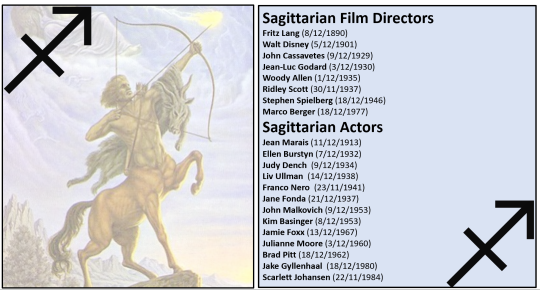



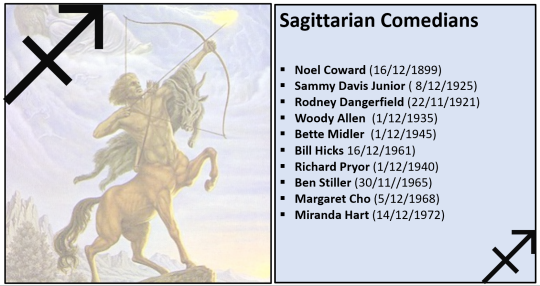
It is well known that Sagittarians make great teachers, lawyers, performers, comedians, artists, philosophers, leaders and musicians. And even with Mercury in Sagittarius, great writers too. So that runs the gamut. So this is a comprehensive round up just in case you missed how multi faceted this zodiac sign actually is, its range is wide. Top of the list are the giants like William Blake who straddles poetry, art and mysticism, and Ludwig Beethoven whose work is monumental and will still be listened to in hundreds of years. But there was also Oliver Messiaen who composed music La Constellation du Sagittaire which was his zodiac sign.
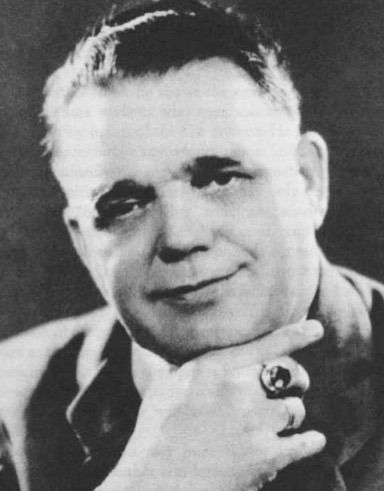
proteusastrologydotcodotuk.files.wordpress.com
Sagittarians make great magicians like Franz Bardon. He was much less known than Aleister Crowley, but nevertheless regarded as one of the most important occultists of the 20th Century, and still we have Dion Fortune, let’s not forget, who was also a Sagittarian and an acute psychologist. for a modern Sagittarian magicians look to Uri Geller. Needless to say Sagittarians also make great astrologers like Robert Hand Nik Kollerstrom and Karen Hamaker-Zondag and these are only the known charts.
Dec 2nd, is the birthday of Britney Spears, who in spite of her wobbly personality is still much loved and, when on form, delivers the goods as a performer. But so many Sagittarian singers. Note also Christine Aguilera, Taylor Swift, Miley Cyrus, and Nicki Minaj- who all love to perform. But before them some of the greats of old include Frank Sinatra, Dionne Warwick and thunder thighs (Sagittarius is linked to the thighs) herself, Tina Turner who became the ultimate Buddhist fulfilling the yearnings of her spiritual nature.
There are also some oddball singers Little Richard, Frank Zappa, Ted Nugent and Tom Waits, and there are two outstanding opera stars Maria Callas, whose voice no one can match, and Jose Carreras.
Sagittarians can even be great hedonists crazies who go off piste from time to time, but are still entertaining. There’s Jim Morrison of the Doors, Ozzy Osbourne of Black Sabbath, Jay-Z and wild man Billy Idol. Some Sagittarians in this category can come across with a certain edgy swagger like Keith Richards of the Rolling Stones.
Then there are philosopher teachers, leader and gurus like Osho, Bruce Lee and B.K.S. Iyengar also embody many quintessentially Sagittarian traits as ultimate teachers all offering some form of physical practice yoga and martial arts-which marries the higher and lower self. Iyengar said ‘my body is my temple and the asanas are my prayers’ but he also said, as a true Sagittarian, that ‘honesty is essential’ in teaching. With Mercury in Sagittarius he could sometimes be difficult to understand when speaking. But there’s also wiseacre, Noam Chomsky, who functions in dual areas as linguistic philosopher and political activist, and then there's author who popularises 'Life School' philosophy, Alain de Botton.
Then we have the artists and painters from Masaccio, to Kandinsky, Paul Klee, Jan Toroop to Lucien Freud and the ever controversial, Marina Abramovic. But one mention must go to French artist and teacher of painting, William Adolph Bougereau, His name was tarnished as being too traditional, not being ‘modern’ enough by Picasso and the art gallery owners who ganged up against him and cast him into the margins of art history as an old fuddy duddy, but he was was as skilled and technically accomplished as any of the Renaissance painters, ran his own school and more hard working and prolific than any of the Impressionists or Post-Impressionists or Cubists.
Then we have the visionary Sci Fi writers Philip K. Dick author of the stories that made it into film: Blade Runner, Minority Report and The Adjustment Bureau. Dick spoke of visions of the future that have if not come true, then are resonating widely. His imagination was as fertile as any and he worked at top speed even bringing downloads of Gnostic wisdom into novels like Valis. Also Arthur C. Clarke and C.S. Lewis were both Sagittarians. These are the big names in the field whose legacy remains strong.
And the film directors can’t be bigger Fritz Lang, Stephen Spielberg and Ridley Scott who directed some of the best known films in past decades and has just directed Napoleon. But working on a smaller, more intimate scale we should not ignore Woody Allen, John Cassavetes, and the lesser known Argentinian film director, Marco Berger.
And who is the most loved actress in the UK? Yorkshire born, Dame Judi Dench as talented and versatile as any actress can be. But world renowned actors include Liv Ullman, John Malkovich, Christopher Plummer, Brad Pitt, Kim Basinger, Julianne Moore and Jake Gylenhaal, most of them known around the world not just in their home countries.
Finally the athletes. Sagittarius is a fully developed physical sign – the hybrid centaur- so we have runner Florence Griffiths-Joyner, Donovan Bailey, and Oscar Pistorius, and football player Kylian Mbappe, along with Tennis players Boris Becker and Monia Seles.
See who else you can recognise in the collage of famous Sagittarians and in the list.
And now to end with comedian Bill Hicks, a Sagittarian, capturing the essence of a daily thought in the minds of these fiery, idealistic spirits:
“The world is like a ride in an amusement park, and when you choose to go on it you think it’s real because that’s how powerful our minds are. The ride goes up and down, around and around, it has thrills and chills, and it’s very brightly colored, and it’s very loud, and it’s fun for a while.
Many people have been on the ride a long time, and they begin to wonder, “Hey, is this real, or is this just a ride?” And other people have remembered, and they come back to us and say, “Hey, don’t worry; don’t be afraid, ever, because this is just a ride.” And we … kill those people. “Shut him up! I’ve got a lot invested in this ride, shut him up! Look at my furrows of worry, look at my big bank account, and my family. This has to be real.” It’s just a ride. But we always kill the good guys who try and tell us that, you ever notice that? And let the demons run amok …
But it doesn’t matter, because it’s just a ride. And we can change it any time we want. It’s only a choice. No effort, no work, no job, no savings of money. Just a simple choice, right now, between fear and love. The eyes of fear want you to put bigger locks on your doors, buy guns, close yourself off. The eyes of love instead see all of us as one. Here’s what we can do to change the world, right now, to a better ride. Take all that money we spend on weapons and defenses each year and instead spend it feeding and clothing and educating the poor of the world, which it would pay for many times over, not one human being excluded, and we could explore space, together, both inner and outer, forever, in peace.”
If you think the world is accelerating towards a collective psychosis, you are not alone but it could be a magnified reflection of our own fears. According to author Paul Levy to recognise that there’s a dream-like quality to reality is the first step to activating your creative higher self, and to use the Daimon- the inner genius or ‘higher’ self- is a way to counter the wetiko mind-blindness that appears to have become virulent in the world. This means taking a ‘quantum’ perspective and Sagittarius is at home with the quantum world and the weird and multiple perspectives and dimensions it brings to bear on the old solidified way of seeing reality.
#Sagittarius #Sagittarian #Jupiter #Zodiac #SagittarianWriters #SagittarianArtists #SagittarianLeaders #SagitarianSingers #SagittarianComedians
0 notes
manmetaphysical
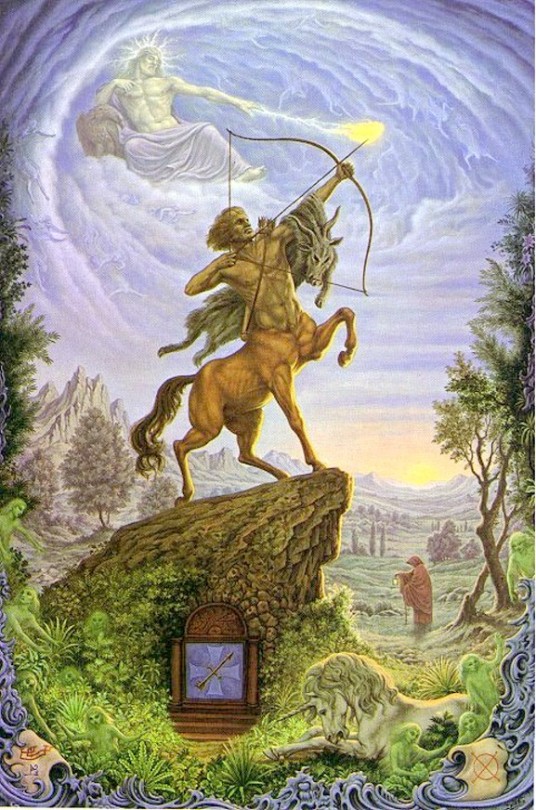
#Sagittarius#Jupiter#Zodiac#Sagittarian#SagittarianLeaders#astrology#SagittarianWriters#SagittarianSingers
9 notes
·
View notes
Text
Yoga teaching


Video yoga teaching with Sjana Elise Earp Yoga teaching, the importance of a good body fitness and a great mental form through great quotes, videos, links and tips about yoga, health, fitness, news and physical exercises. Yoga is not a work-out, it is a work-in. And this is the point of spiritual practice; to make us teachable; to open up our hearts and focus our awareness so that we can know what we already know and be who we already are. Rolf Gates Yoga is not a religion. It is a science, science of well-being, science of youthfulness, science of integrating body, mind and soul. Amit Ray Yoga is a way of life. Yoga is the way we think, move, eat, breathe, speak, act and live. Sjana Elise Earp In theory, practice and theory are the same. In practice they are not. Yogi Berra http://www.youtube.com/watch?v=BgSymYi6p1M Before you've practiced, the theory is useless. After you've practiced, the theory is obvious. David Williams The most important pieces of equipment you need for doing yoga are your body and your mind. Rodney Yee The nature of yoga is to shine the light of awareness into the darkest corners of the body. Jason Crandell Yoga is a mirror to look at ourselves from within. B.K.S. Iyengar REAL Peace is always unshakable... Bliss is unchanged by gain or loss. Yogi Bhajan http://www.youtube.com/watch?v=nP8sfHC5MyE Yoga is a light, which once lit, will never dim. The better your practice, the brighter the flame. B.K.S. Iyengar Yoga is the journey of the self, through the self, to the self. The Bhagavad Gita The yoga mat is a good place to turn when talk therapy and antidepressants aren't enough. Amy Weintraub What we see in the world around us is just a reflection of what is inside of us. Sharon Gannon Anyone who practices can obtain success in yoga but not one who is lazy. Constant practice alone is the secret of success. Svatmarama http://www.youtube.com/watch?v=4501xFXn15k Yoga is the practice of quieting the mind. Patanjali Yoga is the perfect opportunity to be curious about who you are. Jason Crandell Yoga exists in the world because everything is linked. Desikashar The rhythm of the body, the melody of the mind, and the harmony of the soul create the symphony of life. B.K.S. Iyengar Yoga is the fountain of youth. You’re only as young as your spine is flexible. Bob Harper Meditation is a way for nourishing and blossoming the divinity within you. Amit Ray https://www.youtube.com/watch?v=vMbol8JYe3M To keep fit and in a good mood you can also visit: The laws of wellness Wellness best quotes Wellness in Italy Cancer World News Hiv world News Health and fitness Yoga teaching Sports News Read the full article
2 notes
·
View notes
Text
Ancient Roots of Yoga
Yoga has approximately 5,000 years of cultural and spiritual roots in India. This ancient practice encompasses a range of physical, mental, and spiritual disciplines, and its evolution can be split into three stages: prehistoric, historic, and contemporary.

Who We Are
From the bottom of our hearts, we extend a warm welcome to you into the Paras Parivaar Charitable Trust family. In our Sanatan Dharm, this Parivaar was founded and is now being maintained by our Mahant Shri Paras Bhai Ji of Sanatan Dharm to contribute to the welfare of the underprivileged and needy people. Because he consistently states, “happiness of maa is behind their smile.” This idea of Mahant Shri Paras Bhai Ji has become the focus of our family’s daily activities.
The Paras Parivaar Charitable Trust works 365 days a year to lug our Paras Guru’s vision forward. We have helped more than 10 lakh Needy, and thanks to Maa and our Mahant Shri Paras Bhai Ji of Sanatan Dharm, this number is steadily rising. And it is the grandeur of Sanatan Dharm that we strive to assist those who cannot afford to pay for their education or who are food insecure.
Because we usually hear the quote “Unity is Strength” in everyday life, the Paras Parivaar Charitable Trust would like for you to join our family. We are certain that if we all work together as a single family, we will be stronger and more committed to helping more people in need. Serving an increasing number of individuals in need will enable us to carve out a large place in the heart of our Maa. So, join the Paras Parivaar now for the chance of a lifetime to make the poor and needy smile widely.
Working hard to boost the lives of the poor and needy would also help us reduce the rate of poverty and increase the rate of education in our nation. In addition to providing aid to those in need, our Mahant Shri Paras Bhai Ji wants to educate them so that they may become self-sufficient and contribute to the cause. join our Paras Parivaar Charitable Trust and aid those in need and destitute with what they Need for Food, Shelter, and Education.
Historic and Prehistoric Eras
Yoga’s earliest incarnations are thought to have started in the Indus Valley civilisation, where archaeological evidence suggests that yogic practices played a significant role in the people’s spiritual lives. The term “yoga” first appears in the Rig Veda, one of Hinduism’s earliest sacred scriptures, which dates back around 1500 BCE. Yoga was initially an oral practice passed down from instructor to student, with no written records. The Upanishads and Patanjali’s Yoga Sutras, which defined much of yoga’s intellectual foundations, are two later texts that include the thoughts and practices of these sages, known as Rishis, who passed down their wisdom orally for generations.
Yoga evolved over time, with the emergence of several schools of thought within Hinduism, Buddhism, and Jainism. During this time, numerous styles and ideologies emerged, including Hatha Yoga, which places a focus on physical postures and breath control. The teachings were typically delivered in forest hermitages, where students received rigorous instruction under the guidance of their gurus.
The modern era
The modern era of yoga, which began in the late 1800s, saw a significant transformation in how yoga was perceived and practiced. This period coincided with India’s nationalist movement, when yoga was regarded as a symbol of cultural identity and pride. Influential figures such as Swami Vivekananda were essential in introducing yoga to the Western world. His lecture at the World Parliament of Religions in Chicago in 1893 enthralled audiences and laid the groundwork for yoga’s global expansion.
The practice of yoga expanded further in the twentieth century, thanks to the efforts of well-known teachers such as B.K.S. Iyengar and Indra Devi. Iyengar’s emphasis on posture alignment and precision helped popularize yoga in the West, but Indra Devi, often known as the “First Lady of Yoga,” was instrumental in introducing Hatha Yoga to Hollywood, attracting a large number of celebrities.
Globalization and Cultural Exchange
Yoga evolved greatly as it became popular over the world. Modern interpretations usually focus on physical fitness and stress reduction, diverging from its classical roots, which encompass a holistic approach to well-being. This expansion has sparked controversies about cultural appropriation and the legitimacy of modern yoga practices, with many advocating for a return to yoga’s deeper philosophical roots as a spiritual practice.
Despite these changes, yoga’s fundamental nature as a practice that promotes physical, mental, and spiritual equilibrium remains constant. Yoga is now a multibillion-dollar industry with millions of practitioners worldwide, illustrating its continuing appeal and the ongoing dialogue between Eastern and Western cultures.
Conclusion, the fact that yoga began in India highlights the country’s rich historical and cultural heritage. As yoga changes, its core principles — self-awareness, mindfulness, and connection — remain relevant, encouraging practitioners to go beyond just physical practice.
2 notes
·
View notes
Text

In whatever position one is in, or in whatever condition in life one is placed, one must find balance. Balance is the state of the present – the here and now. If you balance in the present, you are living in Eternity. — B.K.S. Iyengar . . .
#balance#postures#asana#yogapractice#yogateachertraining#yogaschool#yogateacher#yogainrishikesh#yogaschoolindia#hatha#balanceposture#yogini#strength#peace#motivation#inspiration
2 notes
·
View notes
Text
What is Yoga?
By Lauren Tober | May 9, 2019 | Yoga + Meditation
When I tell people I teach iRest Meditation, they often ask me if I teach yoga as well.
The answer is YES! iRest Meditation IS yoga.
But I understand the confusion. While yoga is an ancient contemplative practice, it’s also a multi-million dollar industry that largely promotes advanced physical postures and a skinny body as the ultimate goal of yoga. But yoga is more than just downward dogs and sun salutations.
Commentaries of the meaning of the word yoga vary from union, to attaining what was previously unattainable, to directing all our focus on the activity in which we’re engaged, to being one with the divine.¹

Patañjali’s Yoga Sūtras
The meaning of yoga is presented concisely in the Patañjali’s Yoga Sūtras, a text that is considered by many to be the heart of yoga.¹
While little is known about Patañjali, it is widely accepted that he was an authority on yoga, and complied and systemised the vedic knowledge of the time into sūtras that could be handed down orally from teacher to student, in a concise way that would make it possible to remember. It is estimated that Patañjali wrote the sūtras around the second century C.E. and that Vyāsa wrote the original commentary on the sūtras, Yoga-Bhâshya, around the fifth century C.E.²
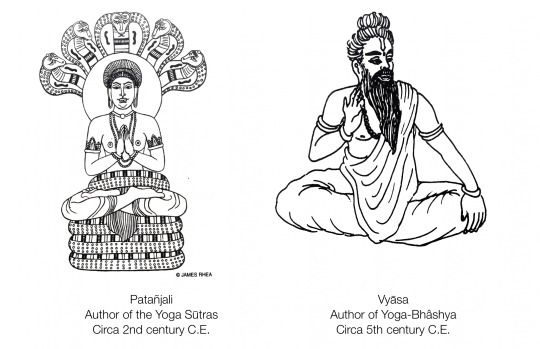
Yogaś Citta Vṛtti Nirodhaḥ
Patanjali’s answer to this question ‘what is yoga?’, is in chapter one, verse two of the Yoga Sūtras:
yogaś citta vṛtti nirodhaḥ (I.2)
Different commentators have interpreted this sutra in subtly different ways.
T.K.V. Desikachar wrote:
“Yoga is the ability to direct the mind exclusively toward an object and sustain that direction without any distractions.”⁴
B.K.S. Iyengar wrote:
“Yoga is the cessation of movements in the consciousness.”⁵
Edwin F. Bryant wrote:
“Yoga is the stilling of the changing states of mind.”⁶
Georg Feuerstein wrote:
“Yoga is the restriction of the whirls of consciousness.”⁷
Judith Hanson Laster wrote:
“Yoga is the state in which the agitations of consciousness are resolved.”⁸
Richard Miller wrote:
“Yoga is when we knowingly live as the realization of unconditioned Stillness, whether thought is in movement or stillness.”⁹
However you interpret this most influential sūtra about the meaning of yoga, it’s clear that the yoga is related to understanding the mind, and has nothing at all to do with having a slim and flexible body that looks sexy in expensive lycra leggings.
REFERENCES
Desikachar, T.K.V. (1995). The Heart of Yoga. Rochester, Vermont, US: Inner Traditions International.
Feuerstein, Georg. (2002). The Yoga Tradition. Delhi, India: Bhavana Books and Prints.
Feuerstein, Georg. (2002). The Yoga Tradition. Delhi, India: Bhavana Books and Prints (p.311)
Desikachar, T.K.V. (1995). The Heart of Yoga. Rochester, Vermont, US: Inner Traditions International (p.149).
Iyengar, B.K.S. (2002). Light on the Yoga Sūtras of Patañjali. London, UK: Thorsons (p.50).
Bryant, Edward. (2009). The Yoga Sūtras of Patañjali. New York, US: North Point Press (p.10).
Feuerstein, Georg. (2002). The Yoga Tradition. Delhi, India: Bhavana Books and Prints (p. 286).
Lasater, Judith Hanson. (2014). The Ten Most Important Sutras.
Miller, Richard. (2013). Level 1 Training Integrative Restoration (version 4.6c). San Rafael, CA, US: Anahata Press (p. xxiii).
#yoga#lord shiva#yoga citta#asana#kundalini#hatha#ashtangavinyasa#mind over matter#patanjali#ilyengar#vyasadeva#yogeshwar
4 notes
·
View notes
Text
B.K.S. Iyengar writes in his book Light on Life: The Yoga Journey to Wholeness, Inner Peace, and Ultimate Freedom -
"Very few people begin yoga because they believe it will be a way to achieve spiritual enlightenment, and indeed a good number may be quiet skeptical about the whole idea of self-realization. Actually, this is not a bad thing because it means most of the people who come to Yoga are practical people who have practical problems and aims -- people who are grounded in the ways and means of life, people who are sensible.
When I set off in yoga, I also had no understanding of the greater glory of yoga. I too was seeking its physical benefits, and it was these that truly saved my life. When I say that yoga saved my life, I am not exaggerating. It was yoga that gave me a new birth with health from illness and firmness from infirmity."
My goal as a lifelong yogi with chronic pain + disabilities is to promote awareness of the benefits of cultivating a yoga practice to help manage chronic pain and suffering of the mind, body, and soul.
For those who may not know, there are many, many different forms of yoga. The internet/the West's version of 'slim woman doing highly athletic and complex pose in an expensive yoga outfit' is not original yoga in its intended form, but rather, an influx of influence by western gymnastics and the capitalistic wellness industry's greed and influence. This is not yoga.
"The truth is that although the body is born, lives, and dies, you cannot catch a glimspe of the divine except through the body." - B.K.S. Iyengar
Yoga and its eight limbs (with only one of those being the physical practice, asana) can and do support mind, body, and soul connection; can help mitigate and manage pain within the mind, body, and soul; and straight-up helps me be better for myself and others. This is not some wellness industry diet culture guru bs I'm putting out here -- countless studies have shown this, and countless people echo this sentiment, including me.
I have been practicing yoga for almost 20 years, throughout many physical changes and problems. I started yoga as an anorexic 14-year-old to try and achieve the perfect body -- but my yoga and the universe, thankfully, had different plans for me. During my healing journey in my late 20s, my orthopedic surgeon/doctor, physical therapists, eating disorder recovery therapist, and clinical dietician have all been ecstatic to utilize my dilligent yoga practice to aid in the many ways I needed to heal; their sources and fields all believe in the benefits of yoga, especially within a disabled and chronically in pain body. I truly hope others find this benefit in their lives and bodies as well.
#yogaforpainmanagement#yogaposes#yoga#yogapractice#yogini#chronic pain#arthritis#eating disoder recovery#yogadaily
3 notes
·
View notes
Text

"Lascia che il ritmo del corpo,.. la melodia della mente,.. e l'armonia dell'anima.. creino la sinfonia della vita.. " ~B.K.S. Iyengar art _by_aimeishi_ ************************ "Let the rythmn of the body,.. the melody of the mind,..and the harmony of the soul.. create the symphony of life.. " ~B.K.S. Iyeng art _by_aimeishi_
7 notes
·
View notes
Text
Understanding the different sort of Yoga
Yoga is winding up being a significantly more popular activity in the Western world today. The range of areas holding Yoga classes is on the increase and there is a series of good deals of sort of Yoga. With a choice of Hatha Yoga, Ashtanga Yoga, Power Yoga, Iyengar Yoga, Bikram Yoga, Vinyasa Yoga and a lot more it can be basic to get puzzled The fast post will help you to understand the difference in between the most popular sort of Yoga so you can select which type is best for you. Hatha Yoga in Sanskrit (an ancient classical language of India) "Ha" encourages "sun" and "tha" recommends "moon". This sort of Yoga is relatively slow paced, moderate sort of Yoga and is an extraordinary place to start if you are absolutely new to Yoga and do not comprehend any of the asanas (presents). Like all sort of Yoga, Hatha Yoga encourages to include the mind, spirit and body. Ashtanga Yoga this is the sort of Yoga that I practice usually and advises "8 limbs" in Sanskrit. It's a fast moving, major style of Yoga practice and is based upon a progressive set series of asanas, consisted of with the breath. Ashtanga Yoga can be rather physically needing as you continuously move from one asana in the series to the next, so you'll find that it will increase your endurance in addition to your adaptability and strength. Power Yoga this is a western analysis of Yoga and is based upon Ashtanga Yoga. A Power Yoga class may not continuously stay with the exact series of positions like Ashtanga Yoga does, nonetheless it does consist of practicing a series of postures without stopping and starting. Iyengar Yoga This sort of Yoga is based upon coaches by B.K.S Igengar and concentrates on the absolute best positioning and sort of the body. Unlike Ashtanga Yoga, there is a concentrate on holding each posture for a prolonged duration rather of moving continually from one posture to the next. Iyengar Yoga makes use of props such as straps and obstructs to customer support up the body into the lots of postures. Vinyasa Yoga Vinyasa encourages breath bundled movement and is another fast paced sort of Yoga, with a concentrate on breathing. A practice generally starts with sun salutations and continue to more major extending. Throughout the practice each present is supported with a counter position. Bikram Yoga otherwise called "Hot Yoga", is practiced in a place warmed to 105 degrees, with a humidity of around 40%. Usually a series of 26 different postures is practiced throughout a Bikram Yoga class and the hot temperature level helps to loosen up muscles. Due to the heat good deals of people sweat a lot throughout the class and this helps to tidy up the body of dangerous substances. I affect trying a number of numerous kinds of yoga to discover what you like finest if you're just beginning or have in reality never ever done any Yoga formerly. Remember, there's no requirement that states you require to follow one sort of Yoga. I like Ashtanga Yoga best, however I also go to routine Iyengar and Hatha Yoga classes for a bit of variety. The variety of areas holding Yoga classes is on the increase and there is a substantial choice of lots of sort of Yoga. With an alternative of Hatha Yoga, Ashtanga Yoga, Power Yoga, Iyengar Yoga, Bikram Yoga, Vinyasa Yoga and a lot more it can be essential to get puzzled Ashtanga Yoga this is the sort of Yoga that I practice regularly and inspires "8 limbs" in Sanskrit. Iyengar Yoga This sort of Yoga is based upon coaches by B.K.S Igengar and concentrates on the proper positioning and sort of the body. The series of places holding Yoga classes is on the increase and there is a series of lots of sort of Yoga. With an alternative of Hatha Yoga, Ashtanga Yoga, Power Yoga, Iyengar Yoga, Bikram Yoga, Vinyasa Yoga and a lot more it can be basic to get puzzled Like all sort of Yoga, Hatha Yoga recommends to include the mind, body and spirit. Ashtanga Yoga this is the sort of Yoga that I practice frequently and exposes "8 limbs" in Sanskrit. Iyengar Yoga This sort of Yoga is based upon coaches by B.K.S Igengar and focuses on the absolute best positioning and sort of the body. With an alternative of Hatha Yoga, Ashtanga Yoga, Power Yoga, Iyengar Yoga, Bikram Yoga, Vinyasa Yoga and a lot more it can be essential to get puzzled Ashtanga Yoga this is the sort of Yoga that I practice regularly and suggests "8 limbs" in Sanskrit. Iyengar Yoga This sort of Yoga is based upon coaches by B.K.S Igengar and focuses on the best positioning and sort of the body. With an alternative of Hatha Yoga, Ashtanga Yoga, Power Yoga, Iyengar Yoga, Bikram Yoga, Vinyasa Yoga and a lot more it can be basic to get puzzled Like all sort of Yoga, Hatha Yoga inspires to include the spirit, body and mind. Ashtanga Yoga this is the sort of Yoga that I practice regularly and suggests "8 limbs" in Sanskrit. Iyengar Yoga This sort of Yoga is based upon coaches by B.K.S Igengar and focuses on the absolute best positioning and kind of the body. Vinyasa Yoga Vinyasa affects breath bundled movement and is another fast paced sort of Yoga, with a concentrate on breathing. The range of places holding Yoga classes is on the increase and there is a series of bargains of kind of Yoga. With a choice of Hatha Yoga, Ashtanga Yoga, Power Yoga, Iyengar Yoga, Bikram Yoga, Vinyasa Yoga and a lot more it can be basic to get puzzled Like all kind of Yoga, Hatha Yoga encourages to include the spirit, body and mind. Ashtanga Yoga this is the sort of Yoga that I practice regularly and suggests "8 limbs" in Sanskrit. Iyengar Yoga This sort of Yoga is based upon coaches by B.K.S Igengar and concentrates on the finest positioning and sort of the body. The range of places holding Yoga classes is on the increase and there is a series of lots of sort of Yoga. With a choice of Hatha Yoga, Ashtanga Yoga, Power Yoga, Iyengar Yoga, Bikram Yoga, Vinyasa Yoga and a lot more it can be basic to get puzzled Like all kind of Yoga, Hatha Yoga recommends to integrate the spirit, body and mind. Ashtanga Yoga this is the sort of Yoga that I practice consistently and suggests "8 limbs" in Sanskrit. Iyengar Yoga This sort of Yoga is based upon coaches by B.K.S Igengar and focuses on the incredibly finest positioning and sort of the body. The range of areas holding Yoga classes is on the increase and there is a series of great deals of sort of Yoga. With an alternative of Hatha Yoga, Ashtanga Yoga, Power Yoga, Iyengar Yoga, Bikram Yoga, Vinyasa Yoga and a lot more it can be basic to get puzzled Like all sort of Yoga, Hatha Yoga recommends to include the mind, spirit and body. Ashtanga Yoga this is the sort of Yoga that I practice consistently and suggests "8 limbs" in Sanskrit. Iyengar Yoga This sort of Yoga is based upon coaches by B.K.S Igengar and concentrates on the finest positioning and type of the body. The range of places holding Yoga classes is on the increase and there is a series of fantastic offers of sort of Yoga. With a choice of Hatha Yoga, Ashtanga Yoga, Power Yoga, Iyengar Yoga, Bikram Yoga, Vinyasa Yoga and a lot more it can be basic to get puzzled Like all sort of Yoga, Hatha Yoga encourages to integrate the body, mind and spirit. Ashtanga Yoga this is the sort of Yoga that I practice regularly and advises "8 limbs" in Sanskrit. Iyengar Yoga This sort of Yoga is based upon coaches by B.K.S Igengar and focuses on the really finest positioning and type of the body.
https://click4information.com/lifestyle/understanding-the-different-sort-of-yoga-2/
0 notes